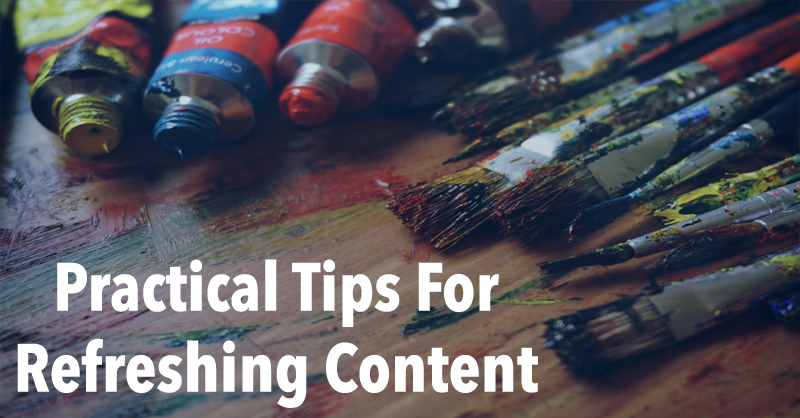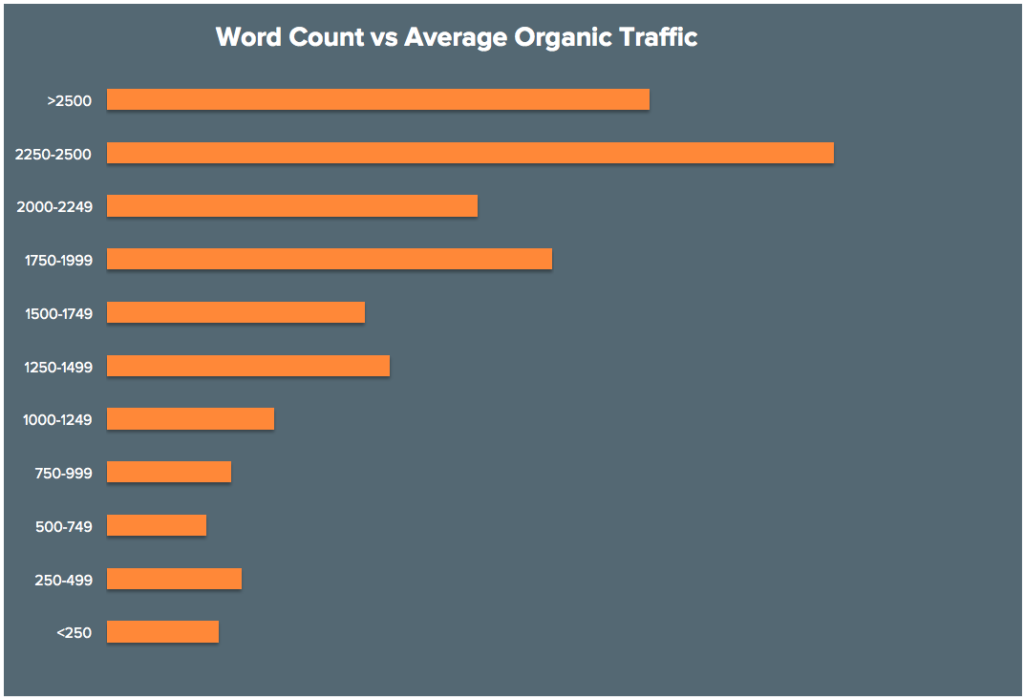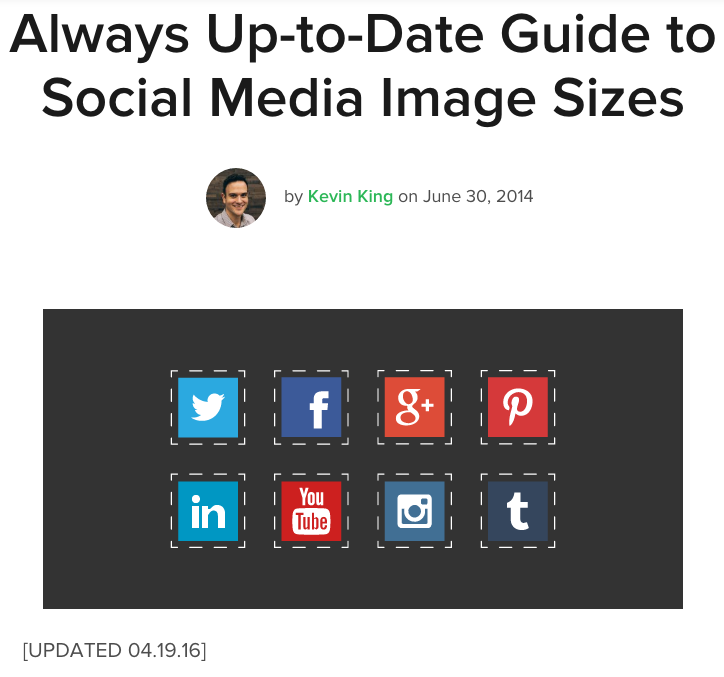
As many of us, myself included, get caught up in regularly publishing written content, it’s easy to forget that updating your existing content is also an option for generating results without reinventing the wheel.
Both readers and Google want the most up-to-date and relevant information presented to them, but overtime some of your blog content might become outdated and less useful.
One technique for addressing this issue is updating a previously published article with new information, revising any errors and removing old insights that are no longer relevant.
I wouldn’t suggest updating every article on a blog, but I’d refer to your analytics and see if any of your top performing content (measured by traffic, conversions, number of links or whatever metrics you’re monitoring) is in need of a refresh.
Refreshing popular content from the past acts as an additional prompt to Google that a website is being regularly updated with new information of use to searchers, which can continue to solidify your rankings.
Rewriting content is also an opportunity to share it with your audience again with a fresh take on an existing subject, especially when sharing the content on social media.
According to Neal Schaffer, Marketing Expert and Founder of Maximize Your Social, “Reviving your existing articles is the fast track for building cornerstone content that establishes authority and offers a compelling experience to your audience.”
Here are a few guidelines to practice in moderation when updating your written content.
1. Improve The Title If Needed
The title of an article is essential for drawing someone to click on it and read it, which is why altering it slightly may be the best route for improving the attention driven to the piece.
It is important to keep the main keywords of the article in the title, but do research to review competing pieces on the same subject and come up with alternative titles that may be more compelling.
Updating the title is especially relevant if it includes a date in it like “The Beginners Guide to Yoga Lingo in 2015”, which should be edited to reflect the current year as long as the piece itself is updated as well.
Never change the title if the piece itself hasn’t been updated or mislead readers about the subject of the article. Updating articles isn’t a shortcut, but an alternate way of driving results from readers and the search engines alike.
2. Remove Irrelevant Information & Add Updated Insights
Review the article for information that is no longer relevant to the industry and should be removed and replaced with a fresh perspective on the subject.
It’s recommended that the word count of the refreshed piece doesn’t go down when republishing, which is why it is important to replace the information that is removed or find new aspects of the subject to explore in more detail.
Longer content isn’t always better but increasing the length of an article with valuable information has proven in some instances to rank highly in Google, generate more links and social shares compared to shorter pieces.

A study by HubSpot of over 6,192 of their blog posts found that articles of 2,250 to 2,500 words earned the most organic traffic and pieces with over 2,500 words were shared on social media and linked to more often.
3. Include A Note About The Update
Whenever updating previously published content on a website, include a note at the top or bottom of the article indicating that it was updated and the date of the last update.
This is an important consideration as it is honest to your readers that the piece has been edited, also providing them with context as to when the last edit was made.
Here are examples of articles including notes about updates made after publishing:



4. Maintain The Context Of The Piece
When adding new information and removing outdated insights it is essential to maintain the same relative focus of the piece that it originally had.
It is certainly okay to update the angle slightly to ensure the article is relevant and current, but don’t change the context significantly as it may be misleading to readers and negatively affect your rankings in the search engines.
5. Review All Media, Links, Stats, Facts And Figures
Double check that all the links, statistics, facts, figures and media in a piece are relevant, while also removing any broken links, replacing outdated images and correcting any errors.
6. Connect The Piece To Related Content
To further improve the resource and optimize for search, link to relevant content across your website that is related to the piece you’re updating and provides additional value to readers on a subject.
Adding links to related content can help the search engines better understand additional subjects your website should rank for and spread the SEO value to other blog posts.
Include parts of previously published content within this updated piece when relevant and alter it slightly, but be mindful not to over do it as moderation with this approach is key.
7. Don’t Change The URL Of The Article
When updating previously published content, never change the original URL of the article as that will break the link to the piece, breaking all links to the resource on any websites and social media, as well as losing your rankings in search.
To avoid this issue, keep the URL as is because in most cases there is nothing wrong with the URL to begin with and it doesn’t need to updated.
In the rare case that the URL isn’t as relevant as it originally was, create a 301 redirect to point the old URL to a new one, which will maintain your existing ranks and ensure all links to the piece are still active. Here’s a video on doing a redirect in WordPress:
8. Include A CTA If Relevant
Since you’re already taking the time to update the article since it’s been a top performing resource to date, add a call-to-action or a few within the resource to incite readers to subscribe to your email list, download a related white paper, visit another resource on the blog, watch a video or even view a product page.
These CTA’s should be subtle, not too pushy and relate to the subject of the article as educating readers should still be its main goal. There is nothing wrong with further converting readers from the attention a piece is generating, just find the right balance when adding a CTA to an article.
Have you updated articles on your blog or elsewhere to further optimize their performance? If so, what results have you seen? Share your experience with refreshing content in the comments below.


